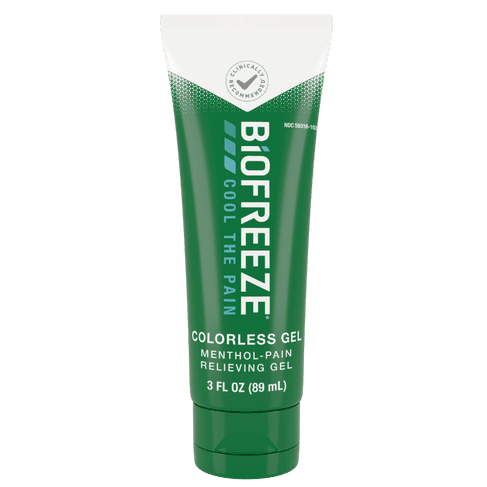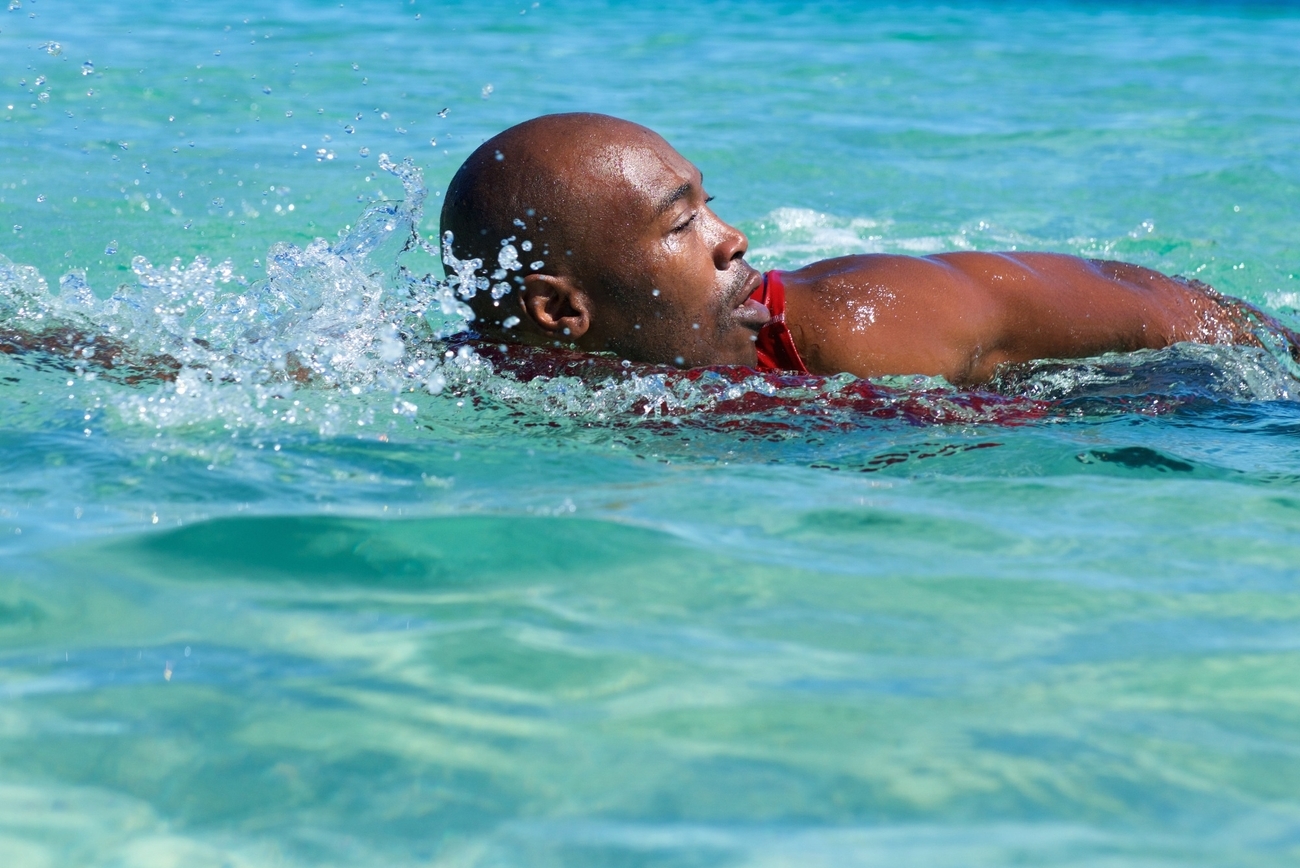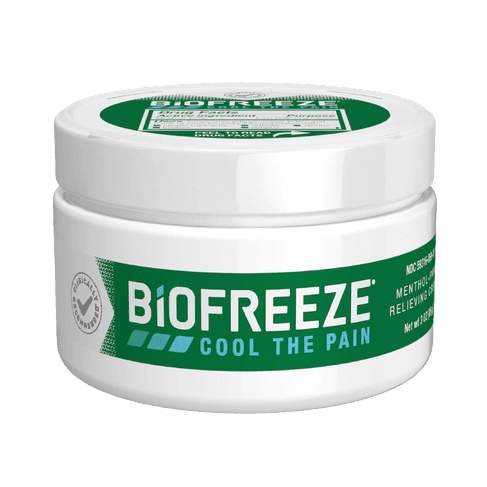Easy Application
Easily Covers Small & Large Areas
Colorless

This article has been medically reviewed for accuracy
Body aches and muscle pains that do not have a direct cause may set off alarm bells in your head. But the truth is, in some cases the cause will be simple, and easily treated with some home remedies and self-care.
After all, muscle pain and soreness are very common. It can happen after a demanding workout, a minor injury, or overexertion of the muscles. These situations can make your muscles feel tight, tender to the touch, and painful altogether.
In this guide, we cover the common symptoms and causes of muscle pain and soreness, and available treatment options for muscle pain relief.
Sore muscles can be the result of over-exertion—your muscles are physically exerted beyond what they’re used to1A or are comfortable with. Your muscles can then become fatigued1B and may feel painful.
Injuries, such as a muscle strain or a muscle contusion, may also explain any body aches or muscle pain you might be experiencing.
Also known as a “pulled muscle,” a muscle strain is a soft-tissue injury that describes an overstretching or tearing of muscle or tendon (elastic tissue bands that attach muscle to bone)2. Symptoms of muscle strain include muscle pain and/or stiffness.1C
Muscle strains may develop when you’re lifting something heavy3 (or relatively heavy) incorrectly, in the wrong position.
Contusions are better known as “bruises.” Muscle contusions refer to bruising that happens within a muscle. This may be the result of blunt force trauma4A, such as a fall or an impact injury.
A bruise can form when blunt force is exerted on the skin/tissue. This crushes the tiny blood vessels under the skin4B and causes blood to spill out into the surrounding tissues. This results in the discoloration (black or blue) that you see on the skin.
Bruises can feel tender or swollen4C and painful.
Exercise is integral to achieving good health. However, overexertion of the muscles during exercise can cause extreme muscle soreness, also known as delayed-onset muscle soreness (DOMS)5A.
DOMS can occur to anyone; a seasoned athlete trying out a new and physically challenging routine, or just someone relatively new to working out.5B
The muscle soreness experienced is due to the small-scale damage the muscle incurs during physical activity. Microscopic tears6A form in the muscle fibers that may lead to muscle inflammation and pain at first, but ultimately, muscle growth6B.
These tiny tears prompt the body to heal the damaged muscle fibers, and to rebuild them bigger and stronger. This way, your muscles are more equipped for when you next use them. This is how we build muscle.
Muscle pain can feel like a dull ache, or general soreness. The pain can also be sharper7A, like a stabbing, or throbbing pain. Some cases of muscle pain may also involve sensations of burning or tingling. However, if you have any concerns or questions, talk to your healthcare provider.
You may feel muscle pain in one specific muscle group (localized muscle pain), or you may feel muscle pain generally throughout your body (systemic muscle pain).
Some people have muscle pain all over, while others have it in specific areas.7B
Below are five body aches treatments you can try to relieve muscle pain.
Topical pain relief products, like Menthol-Pain Relieving Gel, provide pain relief for sore muscles and simple backaches. Biofreeze Menthol-Pain Relieving Gel utilizes the cooling sensations of menthol8.
Biofreeze Menthol-Pain Relieving Gel, Biofreeze Cream, and Biofreeze Patch are all excellent options for targeting muscle pain across larger surface areas (such as the upper or lower back).
For joints or hard-to-reach spots on the body, Biofreeze Flexible Relief Strips and Biofreeze Spray are great picks.
Check out the rest of Biofreeze’s topical pain relief range to find one that suits your pain relief needs.
Over-the-counter pain relievers including aspirin, ibuprofen, and acetaminophen, are common pain relievers you’ll find on the shelves of your local pharmacy.
They may be helpful in reducing or alleviating muscle pain temporarily, and may be used alongside other forms of muscle pain treatment, such as alternative therapies.
Speak to a pharmacist for more information, and to ensure you use them correctly.
R.I.C.E stands for rest, ice, compression, and elevation. Health professionals commonly recommend this method for anyone who has sustained a minor or soft-tissue injury9, which includes sprains, strains, and bruises.
Resting allows the injured body part, time to recover.
What is cold therapy and is it good for me?
Icing, or cold therapy, helps reduce pain10, swelling, and/or inflammation11, 12A.
Compression also works to reduce swelling.
While the R.I.C.E method uses cold therapy to reduce pain, swelling, and inflammation, heat therapy promotes blood circulation12B to the injury and relaxes the injured muscle, encouraging quicker recovery.
The best relief for muscle pain might combine both cold and heat therapy to reap the benefits of both. However, there are instances where heat therapy or cold therapy, like icing or cryotherapy, are not suitable for your muscle pain or injury. Learn more in our guide on heat and ice for muscle pain.
Alternative therapies include massage, chiropractic, and acupuncture13. They are complementary health approaches to conventional medicine that may provide much-needed muscle pain relief.
However, be sure to book with a licensed professional with knowledge and expertise on how to relieve muscle pain.
Easy Application
Easily Covers Small & Large Areas
Colorless
Non Greasy
Easily Covers Small & Large Areas
Easy Application
While many cases of muscle pain can be self-resolved, some cases may indicate a more serious underlying condition. If you experience any of the following symptoms with your muscle pain, call your healthcare provider right away.7C
This article has been medically reviewed for accuracy


Easy Application
Easily Covers Small & Large Areas
Colorless
Non Greasy
Easily Covers Small & Large Areas
Easy Application
